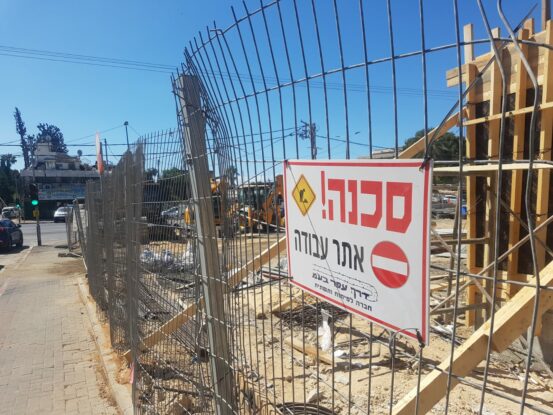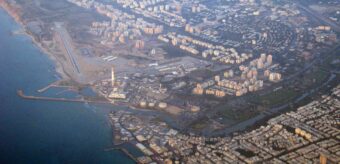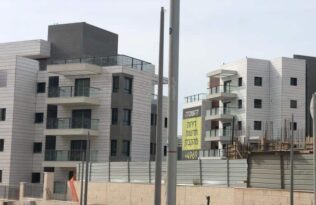Plans underway for the establishment of the first metro system in the densely populated Gush Dan region (Tel Aviv metropolis) are expected to stimulate intensive construction, lead to huge increase in the value of Tel Aviv real estate, and reduce severe traffic congestion in the area.
While residents of Tel Aviv and its surrounding areas await the operation of the Tel Aviv Light Rail in November 2022, following a series of delays, the government is now proposing a many more times grandiose project: the Tel Aviv Metro, an underground mass transit system that will connect to Israel Railways and Tel Aviv Light Rail systems. Alongside the transportation effects, the Tel Aviv Metro is also expected to significantly impact the value of Tel Aviv real estate. The popular Ynet website quoted a senior Treasury official as saying that , “According to conservative estimates, just the addition of building rights in the lots around the metro stations will generate a value of NIS 70 billion.”
According to the plans, the lines for the new metro system are expected to operate across central Israel, an area that is characterized by intensive urban construction and heavy traffic congestion. In doing so, the government hopes to solve the traffic problem, which in recent years has been significantly exacerbated by the inability of central country roads to continue carrying the growing number of cars.
Commercial and office buildings near stations expected to gain significant value – Tel Aviv real estate to increase by 10-19%
The senior official cited two main reasons for the development of the lots in the vicinity of the metro stations: The first is that construction in these areas is currently virtually impossible due to traffic congestion; and the second factor is the increase in value of existing buildings, due to increased accessibility and convenience. “The estimates are that in the vicinity of the stations there will be a 10-19% increase in real estate value depending on distance from the station, which will apply mainly to commercial and office buildings” he said.
The project is expected to include three lines – M1, M2 and M3 – a total length of 150 km, which will include 109 stations in 24 different places in the Tel Aviv metropolis. According to the projections of government owned NTA Metropolitan Mass Transit System Ltd. to whom the project was entrusted, the network is expected to serve two million passengers a day, or 450 million passengers a year. Over the past year, the National Infrastructures Commission approved the route planned for the three lines, and, at the end of last month, the M1 line plan was put up for objections from the public.
Metro will operate in cities far from Tel Aviv
The planning indicates that the metro’s operation radius will be significantly wider than that of the light rail, which will operate only in the heart of the Gush Dan region – i.e. Tel Aviv and its adjacent cities. The Tel Aviv metro, on the other hand, is expected to extend to the cities in the “secondary circle” – i.e. cities located dozens of kilometers from Tel Aviv – from Rehovot in the south to Kfar Saba in the north, and Ramla and Lod in the east.

The M1, the longest line of the three, is expected to run along the north-south axis, with its two northern branches located in one in Kfar Saba and the other in Ra’anana, while its two southern branches in Bilu Junction outside of Rehovot, and Lod. The M2 line will operate on the East-West route, from Petah Tikva in the east to Holon and Bat Yam in the west, while also passing Givat Shmuel, Bnei Brak, Ramat Gan, Givatayim, and Tel Aviv. The M3 line will be spread from Herzliya in the north to Ben Gurion Airport on the southeast, and Bat-Yam on the southwestern branch, with stations in Ramat Hasharon, Tel Aviv, Petach Tikva, Kiryat Ono, Or Yehuda Azor and Holon.
Effect on Tel Aviv real estate as people move out to areas that the Metro reaches
With the three lines of the Metro spanning such a wide area in the Gush Dan region, it is believed that there will be a movement of people from the Greater Tel Aviv area to the suburbs, or circles of cities around Tel Aviv, that will become better connected to employment centers. This is expected to impact Tel Aviv real estate and see higher home prices in more distant cities in the Tel Aviv metropolitan area.
Estimated cost NIS 150 billion, yet to be approved
NTA, the company on which the project was tasked is a government company subordinate to the Ministry of Transportation, whose original purpose was to manage the light rail project that is underway. The manner in which the project is to be carried was to be determined under the Metro Act which was supposed to be passed along with the State Budget Act of 2020. However, since the budget has not yet been approved, neither has the Metro Act.
The estimated cost for the construction of the project is NIS 150 billion. According to the draft law, half of this amount is intended to be provided by the Ministry of Finance from the state budget, an additional 25% is to be funded through improvement levies charged to property owners who will be affected by the project, and the source of funding for the final 25% has not yet been determined, but may be imposed on local authorities or private vehicle users through “congestion charges.”
Skeptics question the project and the managing company
The ambitious plans cloud the government’s unsuccessful past experience, to say the least, in managing and executing large-scale infrastructure projects – almost all of which experience budgetary rejections and major challenges. The first tender for the construction of the light rail in Gush Dan was published as early as 2003, and 17 years later, the operation of the Red Line, the first line has not even begun. Although scheduled for two years’ time, there is still the possibility of further postponement. Furthermore, the cost of establishing the line shifted from NIS 11 billion, according to the initial estimate, to at least 18 billion now.
Even the fact that the complex task was imposed on NTA – the company under whose management the lengthy delays and cost increases occurred in the Light Rail project – has caused great criticism among the Israeli economic press. In the opinion of most experts, in light of the poor experience of the government and government companies in carrying out infrastructure projects, it would be preferable for the project to be carried out through international companies that hold appropriate experience in managing and executing such projects, through a model of public-private cooperation (PPP).
Mega plans may remain but a dream during Covid-19 crisis
While real estate in Tel Aviv and it’s surrounding areas may be significantly impacted by the arrival of the Metro, experts also express question the state’s ability, during an economic crisis, to come up with 150 billion shekels in funding for the benefit of such a project. Here, too, they say, that the project should be transferred to private hands in order to allow the state not to bear the heavy costs of setting up and running such a project during this difficult period.







